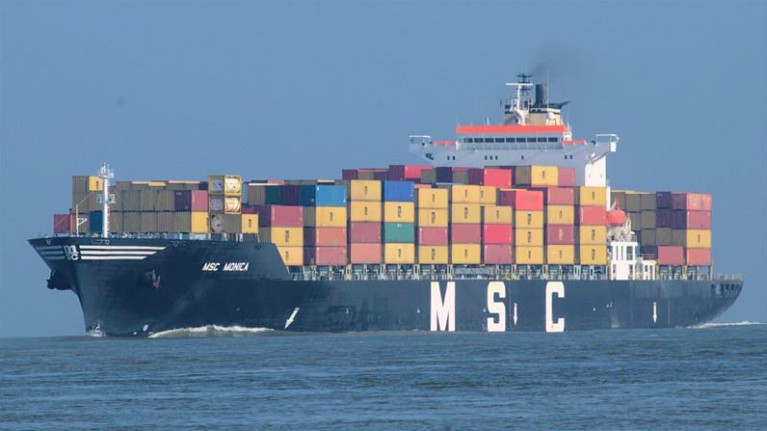Displaying items by tag: Larger Containerships
Afloat observed one of the largest containerships in recent year's arrive on Dublin Bay, a 3,502 TEU capacity ship that called last month to the port was followed by a slightly smaller vessel today, writes Jehan Ashmore.
MSC Monica had called to Dublin from Antwerp in Belgium, as did today's containership, Elbspirit, albeit of slighty reduced capacity of 3,426 TEU (twenty foot equivalent units). The impact of Brexit has also led larger containerships operate through the English Channel along with ro-ro freight ferries kept busy bypassing the UK.
The MSC Monica built in (2003/46,240dwt) is also larger in deadweight terms, had also previously called on the last day of January to the south quays at Marine Terminals Ltd (MTL). This lo-lo terminal is operated by UK based port group Peel Ports through their subsidiary BG Freight Line.
Whereas today's arrival by Elbspirit (2008/42,605dwt) took place on the north quays at the Dublin Ferryport Terminal (DFT). The lo-lo facility is a container division of Irish Continental Group (ICG).
Elbspirit required Dublin Port Co's (DPC) tug Shackleton to take charge at the bow while Giano handled off the stern. The latter tug is operated by a Dublin based operator, Purple Water Towing.
The giant operator MSC, is the world's second largest container company employing 70,000 employees, with a fleet of 560 vessels covering 200 routes all over the world and 500 ports.
With such a huge shipping operator they have 3.1m (TEU) containers! and they operate a subsidiary, MSC Cruises originally formed in Naples, Italy.
Across from the Tyrrhenian Sea port and the Ligurian sea is where operator, Corsica Ferries based in Bastia, has for two months chartered Mega Express Four to ICG's passenger division, Irish Ferries on routes to the UK and France.
Elbspirit, also operates for MSC and so is not to be confused with ICG's other container division, EUCON with containerships mostly with names beginnning with 'Elb', for example Elbtrader.
They too berth at DFT facility which is adjacent to the Dublin Port's main passenger ferry terminal, No.1. Operators at the terminal are Irish Ferries.
In addition the Isle of Man Steam Packet have traditionally served a seasonal link to Douglas during the Easter break, the summer months and for the festive period.























